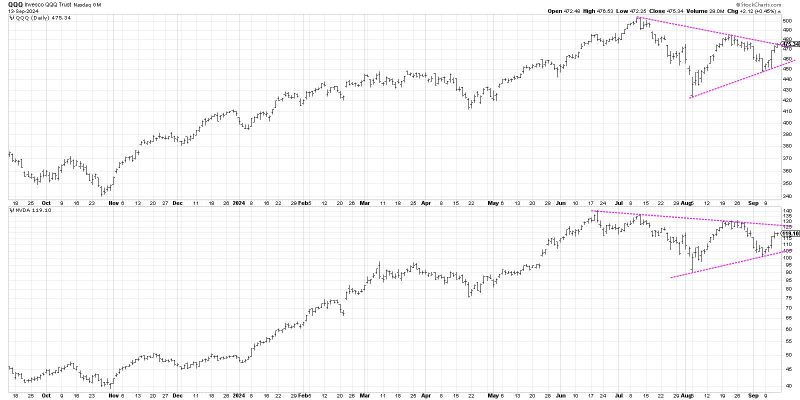In the fast-paced world of investing, predicting the future movements of the market can be both exhilarating and challenging. Every investor strives to uncover the next big trend or anticipate the direction in which various assets will move. One such popular asset that has caught the attention of many investors is the Invesco QQQ Trust (QQQ) ETF, which comprises a basket of non-financial Nasdaq-100 Index stocks. In this article, we will explore a likely scenario for the QQQ ETF and discuss potential factors that could influence its performance.
Scenario Analysis for QQQ
Analyzing the historical data of the QQQ ETF can provide valuable insights into how it may perform in the future. One possible scenario for QQQ is a bullish trend fueled by strong corporate earnings and robust economic growth. If major technology companies within the Nasdaq-100 Index continue to report stellar earnings and demonstrate resilience in the face of economic headwinds, investors may flock to the QQQ ETF in search of exposure to these high-growth stocks.
Furthermore, advancements in technology, such as the proliferation of artificial intelligence, cloud computing, and e-commerce, could act as tailwinds for the QQQ ETF. As these sectors continue to disrupt traditional industries and drive innovation, the companies represented in the QQQ ETF may benefit from increased demand for their products and services, leading to potential price appreciation.
On the other hand, a bearish scenario for the QQQ ETF could materialize if global economic uncertainties persist, leading to a broader market sell-off. Factors such as geopolitical tensions, trade disputes, or unexpected interest rate hikes could spook investors and trigger a flight to safety, causing a downturn in the tech-heavy Nasdaq-100 Index and weighing down the QQQ ETF.
In addition, regulatory challenges faced by major tech companies, concerns over data privacy, or a slowdown in consumer spending could also dampen investor sentiment towards the QQQ ETF. In such a scenario, risk-averse investors may opt to reduce their exposure to high-growth stocks and reallocate their assets to more defensive sectors, which could result in a decline in the QQQ ETF’s value.
Factors Influencing QQQ’s Performance
Several key factors can influence the performance of the QQQ ETF and shape its trajectory in the coming months. First and foremost, macroeconomic indicators such as gross domestic product (GDP) growth, employment figures, and inflation rates can provide valuable insights into the overall health of the economy and impact investor sentiment towards riskier assets like the QQQ ETF.
Moreover, corporate earnings reports from major tech companies, regulatory developments, and geopolitical events can all act as catalysts for movements in the QQQ ETF. Positive earnings surprises, favorable regulatory decisions, or geopolitical stability can bolster investor confidence and drive demand for the QQQ ETF, while negative developments in these areas can have the opposite effect.
Furthermore, investor behavior, market sentiment, and technical analysis indicators can also play a crucial role in shaping the performance of the QQQ ETF. Sentiment shifts, investor positioning, and technical price patterns can provide important signals about the market’s direction and help investors make informed decisions about whether to buy, hold, or sell the QQQ ETF.
In conclusion, the future performance of the QQQ ETF is subject to a multitude of factors, both macroeconomic and microeconomic, that can influence its trajectory in the coming months. By considering various scenarios and staying informed about the key drivers shaping the market, investors can better position themselves to navigate the ups and downs of the market and potentially capitalize on opportunities presented by the QQQ ETF.

